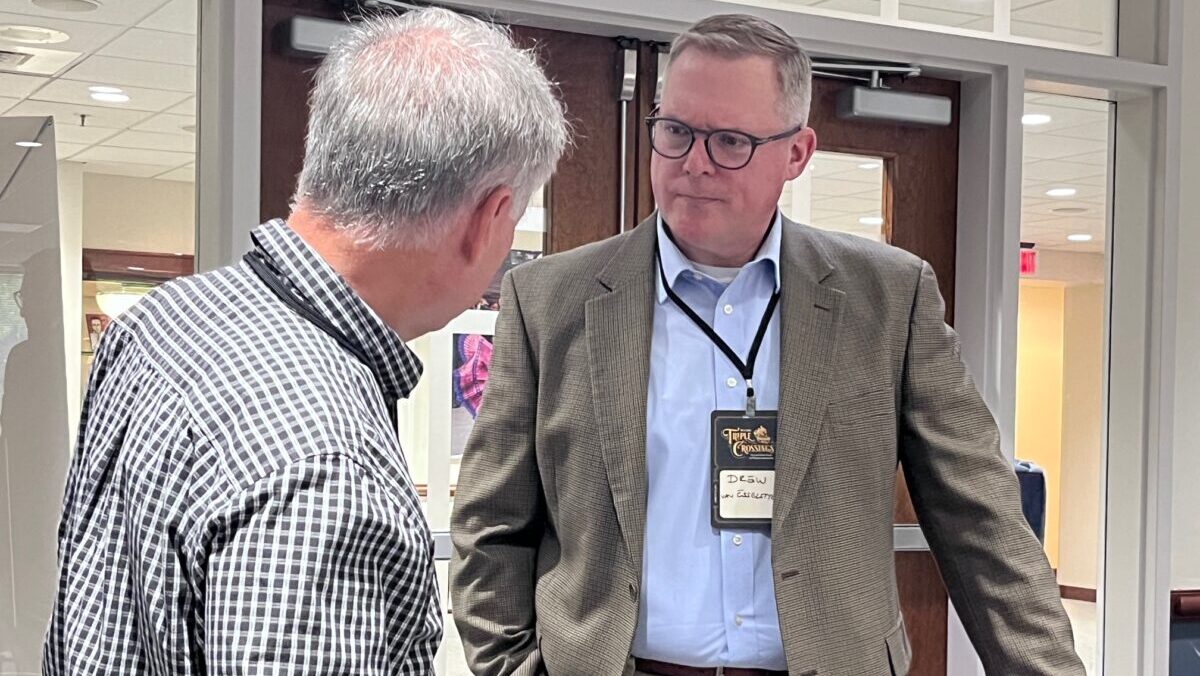“I was tired. I was ready to go home.”
In the lead-up to the 2008 Super Bowl, Drew van Esselstyn and a team of 15 reporters had been working 30-plus days — 10-15 hours a day — in advance of the match-up between the underdog New York Giants and the undefeated New England Patriots.
“We had seemingly exhausted all the storylines,” said van Esselstyn, then sports editor of The Star-Journal in Newark, New Jersey, one of the leading papers in the metro New York area.
“I didn’t think there was anything more that could possibly happen.”
That Super Bowl experience provided van Esselstyn, now director of the Fellowship of Christian Athletes’ Virginia Capital Region, the backdrop for his exhortation at the Baptist Communicators Association’s annual workshop “to be enthusiastic, to be surprised and to be zealous about the stories we have the privilege — if not the obligation, if not the calling — to tell.”
In the 2008 Super Bowl’s opening moments in Phoenix — amid the stadium’s near-blinding flash from cameras and cellphones — a veteran Newark sports columnist “grabbed my arm” in the press box, van Esseltyn recounted.
Jerry Izenberg, who had covered every Super Bowl — 41 of them since 1967 — told him, “Hey, kid, you’re about to be part of history.”
Izenberg’s enthusiasm “was so palpable that a tired, worn out, exhausted, nothing-left-on-the-list kid (though in his 30s) was once again revived in the storytelling of that game” and in a career that had taken him from the Miami Herald and The Washington Post to the sports editor post at New Jersey’s largest newspaper.
(History indeed was made that day as Giants quarterback Eli Manning connected with receiver David Tyree who somehow made a one-handed catch on the side of his helmet, leading to the Giants’ 17–14 upset in the final minute of the game.)
‘A slippery slope’
“But in anything — no matter how wildly it exceeds any bucket list that you might put together for yourself — there can be a slippery slope between vocational joy and the mundanity of your job … a slippery slope between professional delight that dwindles to personal drudgery,” van Esselstyn said.
“That’s where I found myself in 2012.
“We’d been beaten down by the recession of 2008 … from a newsroom of 435 to 192,” he said. “There was a daily hourly news cycle that was crushing.” And with the internet’s increasing prominence, “the world of journalism was still trying to figure out what it wanted to be and how it could find a space in this new world.”
While van Esselstyn was conducting an exit interview with a young writer moving to a job at Sports Illustrated, he wasn’t expecting her to ask: “Drew, how are you doing?”
“And then I uttered the words that I didn’t know were hidden, tucked away deep in my soul. I said, ‘I just wonder about the eternity of what I’m doing.’”
It sparked “a pleading, a waiting and a scary time — an honest reckoning in my heart,” perplexed about God changing the trajectory of his family’s life, “leading me from one career to something that felt so 180 degrees in a different direction,” working with the Fellowship of Christian Athletes in New Jersey.
Yet he began to grasp that “I still had every chance to engage with others, to be awed by them, and even help coaches and athletes unearth their stories for themselves.”
‘Humbly reminded’
“I’ve been consistently surprised by the stories God is writing in the world,” van Esselstyn said. “In my old life in journalism, I certainly had the thought that I was planning, … writing, editing, shaping hundreds of stories a year.”
Now: “I’ve been humbly reminded time and again that God is the best storyteller.”
After moving to Richmond, Virginia, in February 2020 to lead the area’s FCA ministry, van Esseltyn soon faced the COVID–19 crisis and the limitations of Zoom for ministry. But in “the span of nothing going on,” he received an email from a collegiate basketball star he had never met, saying, “I just became a follower of Jesus and I want to figure out what that means.”
What followed were weekly Zoom sessions about “what it means to be a man following Jesus … to be a future husband … to be framed by his new identity and who Christ made him to be.”
“These are the stories I get to tell now, the ones I get trusted with,” van Esselstyn said, noting to the Baptist communicators, “These are the types of stories that you get to write, that you get to photograph, that you get to film, that you get to promote.”
In a world that is “ever more postmodern and post-truth … conditioned and trained to blitz through information,” van Esselstyn voiced concern that people need the ability “to discern the truth, the ability to see beauty, the ability to embrace it, the ability to slow the (up-and-down cellphone) scroll.
“The body of Christ with storytellers like you, shining light on that truth and that beauty, is uniquely positioned to lead the way, not only to show us the stories but to teach us how to tell them.
“The power of what the gospel presents to us in the written form, the film form, the photo form and the graphic design form is going to be something that a paper-thin world is going to want deeply in the bottom of their souls,” van Esselstyn said.
“May we all be storytellers who are filled with wonder, filled with awe for the ultimate story of how God is renewing and restoring and redeeming. … The stories we get the gift of sharing are for our good and the good of our readers (and) the good of the church. But may they be because we are so in love with what we’re able to share. May they be unequivocally for his glory.”
The Baptist Communicators Association, which held its April 22-25 annual workshop at the International Mission Board in Richmond, encompasses 250-plus Baptist professionals working in writing/editorial positions, electronic media, photography, graphic design, public relations, marketing and management.










